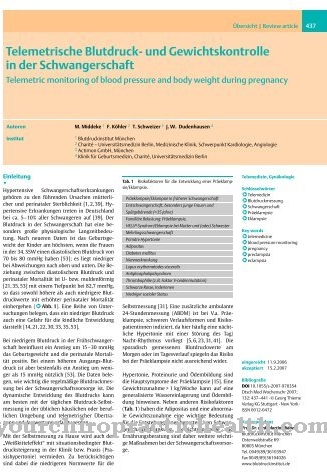Of the Mother pass is by far the most important companion of a pregnant woman. After the first visit to the gynecologist and the determination that you are pregnant, the doctor will complete the 16-page booklet. All important information about the course of pregnancy, but also previous pregnancies and maternal illnesses, are entered in the maternity card.
Everything at a glance
If the woman is found to be pregnant, the doctor will give her the Mother pass out. The document contains all of the mother's important data, but also examinations, appointments and information about the unborn child. It is therefore extremely important that the maternity card is always carried with you and presented at every medical examination.
The maternity record is not only proof of being pregnant, but also a source of information about which examinations have already been carried out or which ones still need to be carried out.
What is in the mother's pass?
On the first page On the maternity record, the stamp as well as any contact details of the treating doctor can be found. On the second page the data of the expectant mother (name, date of birth and address) are entered. On the second page, the blood group, antibodies and the Rh factor are also noted. On the third page any infections are noted. For example, if a urine test shows that a chlamydial infection is present (increases the risk of premature births or miscarriages). The LSR test is also on the same page. LSR (Lues-Such-Reaction) stands for a rarely occurring sexually transmitted disease that can sometimes cause complications for both the mother and the child. The fourth page of the maternity record deals with previous pregnancies. Earlier pregnancies are entered on that page, whereby it must be noted whether a caesarean section was performed or whether it was a forceps or suction bell birth. Premature births or miscarriages, ectopic pregnancies and abortions are also documented on this page. On the fifth page the results of the first preventive medical check-ups are noted or the doctor takes the medical history (anamnesis) of the pregnant woman. On that page you can find information on whether the pregnant woman has current illnesses or allergies. The sixth page deals with the course of pregnancy.These include current illnesses, drug and tobacco consumption, any pregnancy-specific complications or premature labor. It also provides information about whether the pregnancy is multiple. This information should help the doctor to clarify whether a high-risk pregnancy is sometimes given. The calculated due date is also entered on the sixth page. On the seventh and eighth pages there is the gravidogram. The results of numerous preventive examinations are entered here. The pregnant woman repeatedly comes across abbreviations such as "QF" or "SFA". "SFA" (symphysis-fundus distance) gives an insight into the position of the upper edge of the uterus, which - in the course of the further pregnancy - moves upwards.
The information is given in "QF" (cross fingers). "SL" also stands for skull length and "BEL" for breech position. Results of the blood pressure measurements carried out regularly are entered under “RR”. The woman's weight is entered under the “Weight” column. "Hb" provides information about the blood pigment (hemoglobin value). "Sediment" or also "possibly bacteriolog. Bef. ”Provide an overview of protein, nitrite, sugar and blood that was found in the urine.
"MM Ø" or "cervix o.B." mean that the mother's cervix is still closed or the uterine canal is "without findings". Special findings that arose during pregnancy are described in “Risk no. according to catalog B ".
The ninth page is reserved for findings (amniotic fluid examinations) as well as illnesses or hospital stays. The Pages 10 to 14 are available for the results of the ultrasound examinations. The two last pages - 15 and 16 - are used for final examinations. The doctor notes important data here, such as the number of preventive examinations that were carried out during the course of pregnancy or also notes whether there were previous pregnancies or how many deliveries the pregnant woman has already experienced.Information on the child's birth is also provided on the last pages. The doctor documents the course of the birth or also notes the result of the so-called Apgar test, which was carried out on the child. As part of the test, breathing, muscle tension, pulse, the triggering of reflexes and skin color are checked or checked and then entered. Furthermore, information on the puerperium can be found on the last page, and any processes or complications are documented.
Always there - just in case
The maternity record should be a companion of the pregnant woman throughout the pregnancy. Mainly because not only the mother's medical history is noted in the maternity record, but also the entire course of the pregnancy is documented.
Especially in the event of an emergency, the attending physician can determine in the maternity record whether there have already been complications or which factors need to be considered. For this reason, it is also particularly important that the maternity card is taken with you every time you go to the gynecologist.
Throw it away or pick it up?
The maternity record should never be thrown away. On the one hand, it is a wonderful and unique souvenir of the pregnancy, on the other hand, the maternity card naturally also helps the doctor if previous pregnancies have already been entered and documented. In this way, any comparisons can be made or a full anamnesis of the pregnant woman is already available.

















.jpg)



.jpg)

.jpg)




